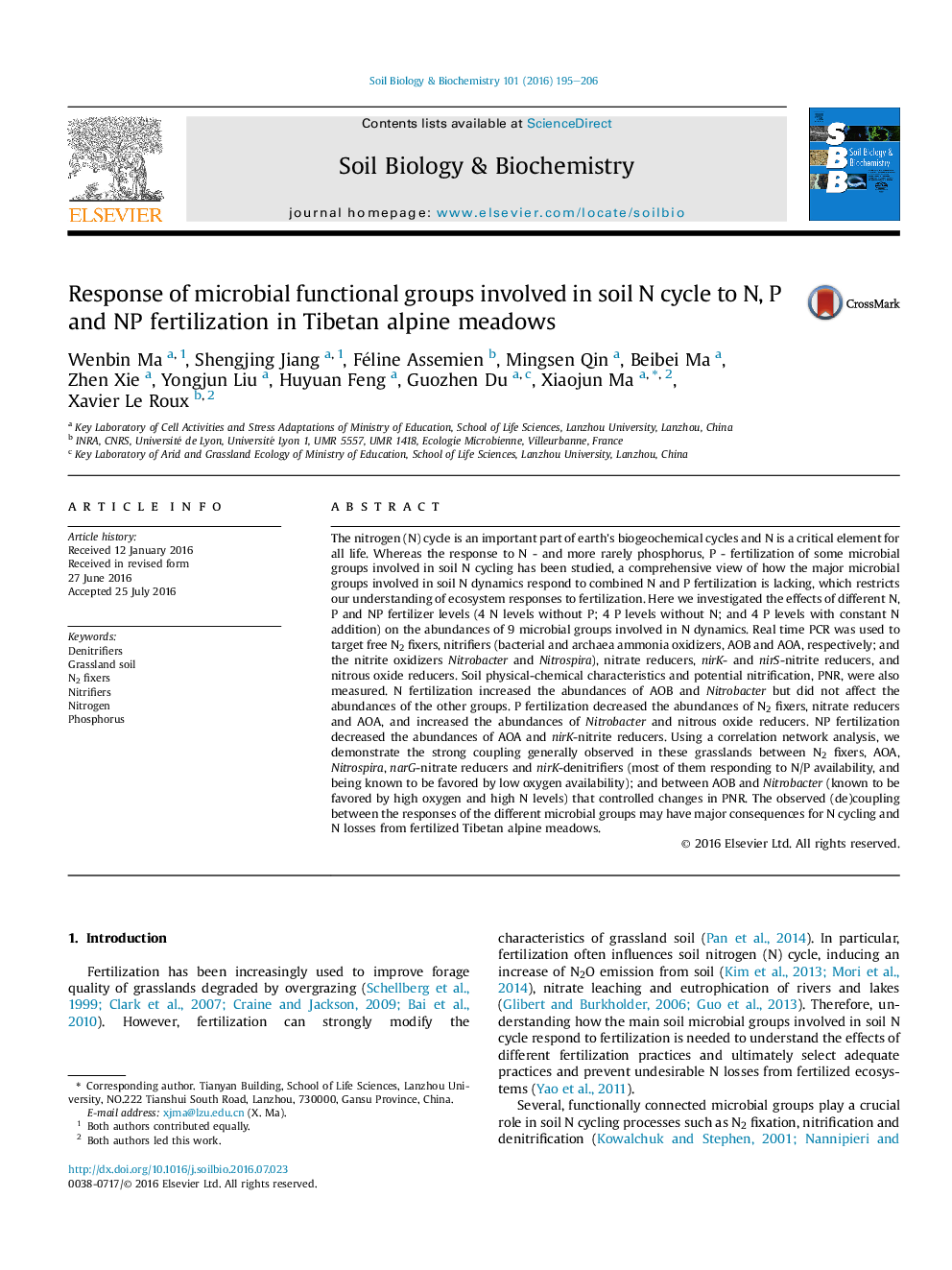| کد مقاله | کد نشریه | سال انتشار | مقاله انگلیسی | نسخه تمام متن |
|---|---|---|---|---|
| 8363480 | 1542583 | 2016 | 12 صفحه PDF | دانلود رایگان |
عنوان انگلیسی مقاله ISI
Response of microbial functional groups involved in soil N cycle to N, P and NP fertilization in Tibetan alpine meadows
دانلود مقاله + سفارش ترجمه
دانلود مقاله ISI انگلیسی
رایگان برای ایرانیان
موضوعات مرتبط
علوم زیستی و بیوفناوری
علوم کشاورزی و بیولوژیک
دانش خاک شناسی
پیش نمایش صفحه اول مقاله

چکیده انگلیسی
The nitrogen (N) cycle is an important part of earth's biogeochemical cycles and N is a critical element for all life. Whereas the response to N - and more rarely phosphorus, P - fertilization of some microbial groups involved in soil N cycling has been studied, a comprehensive view of how the major microbial groups involved in soil N dynamics respond to combined N and P fertilization is lacking, which restricts our understanding of ecosystem responses to fertilization. Here we investigated the effects of different N, P and NP fertilizer levels (4 N levels without P; 4 P levels without N; and 4 P levels with constant N addition) on the abundances of 9 microbial groups involved in N dynamics. Real time PCR was used to target free N2 fixers, nitrifiers (bacterial and archaea ammonia oxidizers, AOB and AOA, respectively; and the nitrite oxidizers Nitrobacter and Nitrospira), nitrate reducers, nirK- and nirS-nitrite reducers, and nitrous oxide reducers. Soil physical-chemical characteristics and potential nitrification, PNR, were also measured. N fertilization increased the abundances of AOB and Nitrobacter but did not affect the abundances of the other groups. P fertilization decreased the abundances of N2 fixers, nitrate reducers and AOA, and increased the abundances of Nitrobacter and nitrous oxide reducers. NP fertilization decreased the abundances of AOA and nirK-nitrite reducers. Using a correlation network analysis, we demonstrate the strong coupling generally observed in these grasslands between N2 fixers, AOA, Nitrospira, narG-nitrate reducers and nirK-denitrifiers (most of them responding to N/P availability, and being known to be favored by low oxygen availability); and between AOB and Nitrobacter (known to be favored by high oxygen and high N levels) that controlled changes in PNR. The observed (de)coupling between the responses of the different microbial groups may have major consequences for N cycling and N losses from fertilized Tibetan alpine meadows.
ناشر
Database: Elsevier - ScienceDirect (ساینس دایرکت)
Journal: Soil Biology and Biochemistry - Volume 101, October 2016, Pages 195-206
Journal: Soil Biology and Biochemistry - Volume 101, October 2016, Pages 195-206
نویسندگان
Wenbin Ma, Shengjing Jiang, Féline Assemien, Mingsen Qin, Beibei Ma, Zhen Xie, Yongjun Liu, Huyuan Feng, Guozhen Du, Xiaojun Ma, Xavier Le Roux,